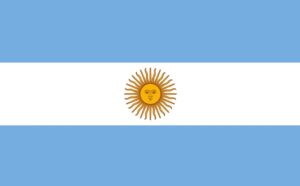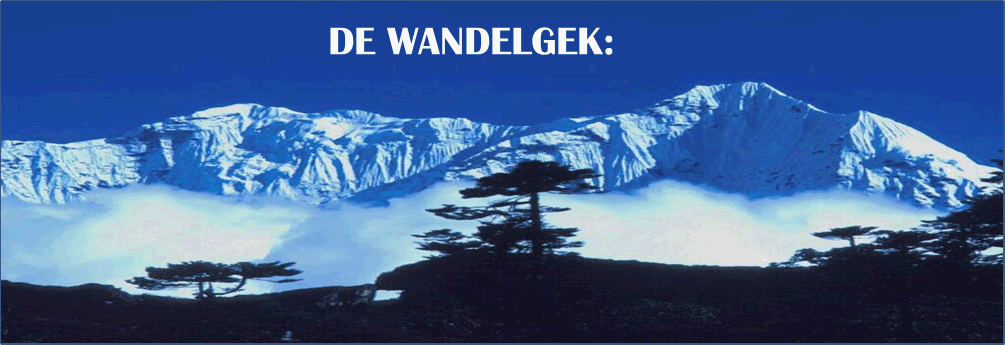 Argentina, officially the Argentine Republic, is a country in the southern half of South America. Argentina covers an area of 2,780,400 km2 (1,073,500 sq mi), making it the second-largest country in South America after Brazil, the fourth-largest country in the Americas, and the eighth-largest country in the world. It shares the bulk of the Southern Cone with Chile to the west, and is also bordered by Bolivia and Paraguay to the north, Brazil to the northeast, Uruguay and the South Atlantic Ocean to the east, and the Drake Passage to the south. Argentina is a federal state subdivided into twenty-three provinces, and one autonomous city, which is the federal capital and largest city of the nation, Buenos Aires. The provinces and the capital have their own constitutions, but exist under a federal system. Argentina claims sovereignty over the Falkland Islands, South Georgia and the South Sandwich Islands, and a part of Antarctica.
Argentina, officially the Argentine Republic, is a country in the southern half of South America. Argentina covers an area of 2,780,400 km2 (1,073,500 sq mi), making it the second-largest country in South America after Brazil, the fourth-largest country in the Americas, and the eighth-largest country in the world. It shares the bulk of the Southern Cone with Chile to the west, and is also bordered by Bolivia and Paraguay to the north, Brazil to the northeast, Uruguay and the South Atlantic Ocean to the east, and the Drake Passage to the south. Argentina is a federal state subdivided into twenty-three provinces, and one autonomous city, which is the federal capital and largest city of the nation, Buenos Aires. The provinces and the capital have their own constitutions, but exist under a federal system. Argentina claims sovereignty over the Falkland Islands, South Georgia and the South Sandwich Islands, and a part of Antarctica.
The earliest recorded human presence in modern-day Argentina dates back to the Paleolithic period. The Inca Empire expanded to the northwest of the country in Pre-Columbian times. The country has its roots in Spanish colonization of the region during the 16th century. Argentina rose as the successor state of the Viceroyalty of the Río de la Plata, a Spanish overseas viceroyalty founded in 1776. The declaration and fight for independence (1810–1818) was followed by an extended civil war that lasted until 1861, culminating in the country’s reorganization as a federation. The country thereafter enjoyed relative peace and stability, with several waves of European immigration, mainly Italians and Spaniards, radically reshaping its cultural and demographic outlook; over 60% of the population has full or partial Italian ancestry, and Argentine culture has significant connections to Italian culture.
The almost-unparalleled increase in prosperity led to Argentina becoming the seventh-wealthiest nation in the world by the early 20th century. In 1896, Argentina’s GDP per capita surpassed that of the United States and was consistently in the top ten before at least 1920. Currently, it is ranked 62nd in the world. Following the Great Depression in the 1930s, Argentina descended into political instability and economic decline that pushed it back into underdevelopment, although it remained among the fifteen richest countries for several decades. Following the death of President Juan Perón in 1974, his widow and vice president, Isabel Perón, ascended to the presidency, before being overthrown in 1976. The following military junta, which was supported by the United States, persecuted and murdered thousands of political critics, activists, and leftists in the Dirty War, a period of state terrorism and civil unrest that lasted until the election of Raúl Alfonsín as president in 1983.
Argentina is a regional power, and retains its historic status as a middle power in international affairs. A major non-NATO ally of the United States, Argentina is a developing country that ranks 47th in the Human Development Index, the second-highest in Latin America after Chile. It maintains the second-largest economy in South America, and is a member of G-15 and G20. Argentina is also a founding member of the United Nations, World Bank, World Trade Organization, Mercosur, Community of Latin American and Caribbean States and the Organization of Ibero-American States.
With a mainland surface area of 2,780,400 km2 (1,073,518 sq mi), Argentina is located in southern South America, sharing land borders with Chile across the Andes to the west; Bolivia and Paraguay to the north; Brazil to the northeast, Uruguay and the South Atlantic Ocean to the east; and the Drake Passage to the south; for an overall land border length of 9,376 km (5,826 mi). Its coastal border over the Río de la Plata and South Atlantic Ocean is 5,117 km (3,180 mi) long.
Argentina’s highest point is Aconcagua in the Mendoza province (6,959 m (22,831 ft) above sea level), also the highest point in the Southern and Western Hemispheres. The lowest point is Laguna del Carbón in the San Julián Great Depression Santa Cruz province (−105 m (−344 ft) below sea level, also the lowest point in the Southern and Western Hemispheres, and the seventh lowest point on Earth).
The northernmost point is at the confluence of the Grande de San Juan and Mojinete rivers in Jujuy province; the southernmost is Cape San Pío in Tierra del Fuego province; the easternmost is northeast of Bernardo de Irigoyen, Misiones and the westernmost is within Los Glaciares National Park in Santa Cruz province. The maximum north–south distance is 3,694 km (2,295 mi), while the maximum east–west one is 1,423 km (884 mi).
Some of the major rivers are the Paraná, Uruguay—which join to form the Río de la Plata, Paraguay, Salado, Negro, Santa Cruz, Pilcomayo, Bermejo and Colorado. These rivers are discharged into the Argentine Sea, the shallow area of the Atlantic Ocean over the Argentine Shelf, an unusually wide continental platform. Its waters are influenced by two major ocean currents: the warm Brazil Current and the cold Falklands Current.
Argentina is one of the most biodiverse countries in the world hosting one of the greatest ecosystem varieties in the world: 15 continental zones, 2 marine zones, and the Antarctic region are all represented in its territory. This huge ecosystem variety has led to a biological diversity that is among the world’s largest: 9,372 cataloged vascular plant species (ranked 24th); 1,038 cataloged bird species (ranked 14th); 375 cataloged mammal species (ranked 12th); 338 cataloged reptilian species (ranked 16th); and 162 cataloged amphibian species (ranked 19th).
The original pampa had virtually no trees; some imported species like the American sycamore or eucalyptus are present along roads or in towns and country estates (estancias). The only tree-like plant native to the pampa is the evergreen Ombú. The surface soils of the pampa are a deep black color, primarily mollisols, known commonly as humus. This makes the region one of the most agriculturally productive on Earth; however, this is also responsible for decimating much of the original ecosystem, to make way for commercial agriculture. The western pampas receive less rainfall, this dry pampa is a plain of short grasses or steppe.
The National Parks of Argentina make up a network of 35 national parks in Argentina. The parks cover a very varied set of terrains and biotopes, from Baritú National Park on the northern border with Bolivia to Tierra del Fuego National Park in the far south of the continent. The Administración de Parques Nacionales (National Parks Administration) is the agency that preserves and manages these national parks along with Natural monuments and National Reserves within the country. Argentina had a 2018 Forest Landscape Integrity Index mean score of 7.21/10, ranking it 47th globally out of 172 countries.
In general, Argentina has four main climate types: warm, moderate, arid, and cold, all determined by the expanse across latitude, range in altitude, and relief features. Although the most populated areas are generally temperate, Argentina has an exceptional amount of climate diversity, ranging from subtropical in the north to polar in the far south. Consequently, there is a wide variety of biomes in the country, including subtropical rain forests, semi-arid and arid regions, temperate plains in the Pampas, and cold subantarctic in the south. The average annual precipitation ranges from 150 millimetres (6 in) in the driest parts of Patagonia to over 2,000 millimetres (79 in) in the westernmost parts of Patagonia and the northeastern parts of the country. Mean annual temperatures range from 5 °C (41 °F) in the far south to 25 °C (77 °F) in the north.
Major wind currents include the cool Pampero Winds blowing on the flat plains of Patagonia and the Pampas; following the cold front, warm currents blow from the north in middle and late winter, creating mild conditions. The Sudestada usually moderates cold temperatures but brings very heavy rains, rough seas and coastal flooding. It is most common in late autumn and winter along the central coast and in the Río de la Plata estuary. The Zonda, a hot dry wind, affects Cuyo and the central Pampas. Squeezed of all moisture during the 6,000 m (19,685 ft) descent from the Andes, Zonda winds can blow for hours with gusts up to 120 km/h (75 mph), fueling wildfires and causing damage; between June and November, when the Zonda blows, snowstorms and blizzard (viento blanco) conditions usually affect higher elevations.
Climate change in Argentina is predicted to have significant effects on the living conditions in Argentina. The climate of Argentina is changing with regards to precipitation patterns and temperatures. The highest increases in the precipitation (from the period 1960–2010) have occurred in the eastern parts of the country. The increase in precipitation has led to more variability in precipitation from year to year in the northern parts of the country, with a higher risk of prolonged droughts, disfavoring agriculture in these regions.
